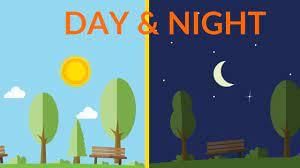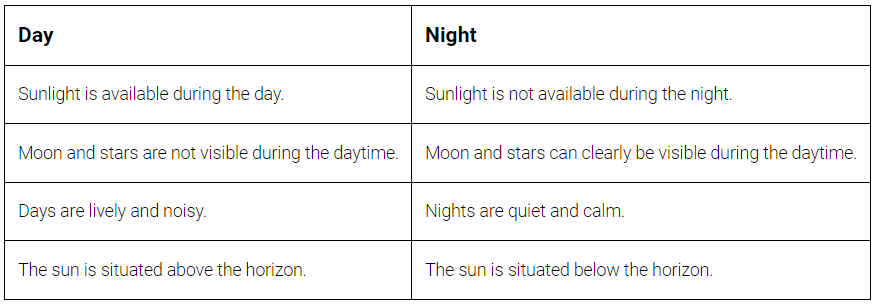What Causes Day and Night? | General Knowledge for Young Learners - Class 1 PDF Download
Introduction
Have you ever wondered how and why sunlight comes around 6 am every day on earth? And what causes day and night? These are fundamental questions your kid might ask you. Let’s explore some facts about the earth. On earth, every living thing is based on a schedule of nature and the solar system. The primary thing that causes the earth the most is day and night. But how day and night are occurring on the planet? Do we have 24 hours in a day? There are many facts behind the universe. Let’s explore some points about the cause of night and day.
What is Day and Night?
A day is a time it takes for the sun to move around the Earth and night occurs when the moon covers the sun.
What causes day and night?
Day and night are caused due to the rotation of the Earth on its axis. The Earth rotates once every 24 hours, which means that every part of the planet experiences a period of daylight and a period of darkness in that time frame. As the Earth rotates, different parts of it are exposed to the Sun’s light. When a particular location is facing the Sun, it experiences daylight, and when it is turned away from the Sun, it experiences night.
What is the Difference Between Day and Night?
Day and night are the two main parts of the earth’s rotation in the solar system. The day is very bright with the existence of the sun, while the night is dark with the presence of the moon and the absence of the sun. Almost everything seems familiar during the daytime, while the same things look unfamiliar at night.
Describe the Cycle of Day and Night and How Day and Night Occur on the Earth?
One rotation takes about 24 hours to complete. Similarly, it means that every 24 hours, the earth reaches the exact location in the sky where the sun appears in the sky. Conversely, the earth also moves around the sun, slightly complicating the measuring of the day. The actual time of one rotation is a bit shorter. It is precisely 23 hours and 56 minutes.
What is Equinox?
Equinox is the Earth’s position when the Sun’s rays fall straight on the Equator. Every year it happens twice. Neither of the Poles is inclined towards the Sun at this position. Therefore, the entire Earth has equal days and equal nights during this position.
What is Solstice?
A solstice is an occurrence that occurs when the Sun seems to reach its large northerly or southerly excursion close to the celestial equator on the celestial orb. Two solstices happen yearly, around June 21 and December 21.
Why Does the Duration of Day and Night Keep Changing?
A solar day lasts for 24 hours. The same statement cannot be said for daylight and night. In other words, the daytime and night do not divide into 12 hours equally.
Moreover, the days are shorter in winter compared to summer and vice versa. It happens so because the imaginary axis of the earth is tilted 23.5 degrees. It isn’t straight up and down.
The earth is inclined away from the sun, which results in long nights. Therefore, when the earth moves around the sun in one year, the northern half tilts towards the sun during summertime. Thus, it makes the days longer than nights. Similarly, it reverses during winter.
Subsequently, the earth is not inclined toward or away from the sun during the spring and autumn. It causes the day and night to vary in length during these seasons.
|
52 videos|107 docs|40 tests
|
















